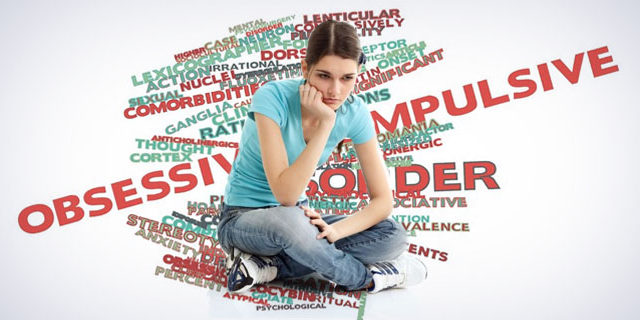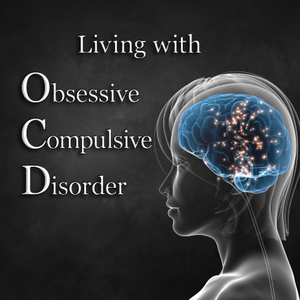Trypophobia and Obsessive Compulsive Disorder
The obsessive-compulsive disorder is a mental disorder characterized by recurring and persistent thoughts and obsessions causing the intense feelings of discomfort, fear, and anxiety. The American Psychiatric Association puts obsessive-compulsive and related disorders, including GAD, social phobia, trichotillomania (hair-pulling), and skin-picking together in a category that is closely linked to the symptom of anxiety. To reduce the obsessive thoughts, a person performs compulsive and repetitive behaviors or mental actions which are aroused by his inability to control certain actions and life situations. The sufferers try to diminish, neutralize, or avoid compulsive actions that are subjectively restored as feelings of control, and try to reduce stress (for example the person repeatedly checks whether she has turned off the stove or frequent and long-lasting hand washing). A person then feels relieved, but obsessive thoughts are returning after a while and launching a new cycle. Depending on the strength of the symptoms, people with obsessive-compulsive disorder feel significant emotional discomfort and spend time (everyday life) on obsessively compulsive patterns, resulting in disruption of their everyday functioning (family, work, social, academic, interpersonal).

Trypophobia can result from OCD
All anxiety disorders are characterized by persistent, irrational, or overwhelming anxiety and experience has shown that these anxiety disorders share some symptoms and can occur at the same time. The prevalence of the disorder in the population is between 0.5 and 2%. i.e. OCD affects about 2.2 million adults. The onset of symptoms usually occurs during youth, and both men and women experience it.
According to the Anxiety and Depression Association of America, the disorder is characterized by some common obsessions and compulsions:
OBSESSIONS
▶ Constant irrational worry about dirt, germs, or contamination
▶ Excessive concern with order, arrangement, or symmetry
▶ Fear that negative or blasphemous thoughts or impulses will cause personal harm or harm to a loved one
▶ Preoccupation with losing or throwing away objects with little or no value
▶ Distasteful religious and sexual thoughts or images
COMPULSIONS
▶ Cleaning — repeatedly washing hands, bathing, or cleaning household items
▶ Checking and re-checking several to hundreds of times a day that the doors are locked, the stove is turned off, hairdryer is unplugged, etc.
▶ Repeating — Unable to stop repeating a name, phrase, or activity
▶ Touching and arranging things
▶ Mental rituals — endless reviewing of conversations, counting or praying to neutralize obsessions
The researchers and doctors don’t know what exactly causes the obsessive-compulsive personality disorder. What we know so far is that it can occur after intense, long-lasting or recurrent stressful situations or traumatic events and that the symptoms increase in periods of elevated stress similar to many other psychological disorders. Most experts agree with the biopsychosocial model of causation – this implies that the cause must be sought in the entire life history of a person. Namely, the cause is most likely attributed to the biological, environmental and genetic factors, as well as social (the way in which a person in early childhood established his relationship with parents as well as with other children) and psychological (temperament shaped by the environment in which a person grew up). So it’s not one factor responsible for the occurrence of the disorder, but the complex, intertwined action of all the above factors. The latest research has found some common neurobiological features of people with OCD but there are still ambiguous findings of their impact on the emergence and development of the OCD. The biological and genetic factors include the changes in the person’s body and brain functions, while environmental factors include negative childhood experiences, infections, illness, etc.
The Symptoms of OCD
The first symptoms of OCD are not significantly different from those at later stages of the disorder, they differ in individual and intensity. Most often, people are experiencing recurring thoughts and ideas over and over again, they have no sense of control, but they are aware of them and feel uncomfortable knowing that these thoughts are meaningless (which is not the case for younger children). Along with thoughts, there are also feelings of fear, anxiety, sorrow, suspicion, and increased need to control things and situations around them.
This well-established pattern implies the preoccupation with orderliness, perfectionism, mental and interpersonal control. The patient with OCD experiences the following symptoms:
- preoccupation with details, rules, lists, order, organization, or schedules to the extent that the major point of the activity is lost
- the inability to live “here and now” with the imposition of unpleasant persistent thoughts
- showing perfectionism that interferes with task completion (e.g., is unable to complete a project because his or her own overly strict standards are not met)
- excessively devoted to work and productivity to the exclusion of leisure activities and friendships
- is overconscientious, scrupulous, and inflexible about matters of morality, ethics, or values
- unable to discard worn-out or worthless objects even when they have no sentimental value
- reluctant to delegate tasks or to work with others unless they submit to exactly his or her way of doing things
- adopts a miserly spending style toward both self and others; money is viewed as something to be hoarded for future catastrophes
- shows rigidity and stubbornness
The obsessive-compulsive disorder usually includes obsessions and compulsive behaviors, but it is possible that only one of these patterns is manifested as a symptom. Approximately one-third of people with the obsessive-compulsive disorder also have disorders involving sudden, short, intermittent movements or sounds (ticks).
Symptoms of Obsessive Behavior
The symptoms of obsessive behavior are repeated in the form of persistent and unwanted thoughts or images that cause pain and anxiety. Obsessive thoughts usually occur when a person is trying to think or do other things, and most often lead to a person trying to solve them by repetition of a certain compulsive behavior. An example of the obsessive behavior is the fear of bacteria, the need for all things to be symmetrically arranged, unwanted thoughts that may include aggression, sexual, religious or other issues, fear of handling some things, constant checking of locked doors, etc.

Trypophobes can have OCD traits
Symptoms of Compulsive Behavior
Compulsive behavior involves recurring behaviors triggered by obsession or instincts. This recurring behavior has the purpose of reducing anxiety- related obsessions or preventing bad things to happen. Such fears are almost never rational. Symptoms usually begin gradually and get worse when a person experiences stressful moments. OCD is considered a life-long illness and can be very difficult to treat. Most adults admit that their obsession and compulsive behavior makes no sense, and children don’t usually understand that such behavior is something that is not right. An example of the compulsive behavior is the constant washing of hands, clothing, teeth, counting in certain patterns, repetition of words or phrases, arranging things by the exact pattern, storing unnecessary things, etc.
OCD can be effectively treated with medication and psychotherapy. Early diagnosis and treatment are very important and some of the patients may experience remission by early adulthood. Scientifically supported effective treatments for OCD include cognitive-behavioral therapy (CBT) with exposure and response prevention (ERP), and medication (such as antidepressants).
Trypophobia and OCD

Can you live with your Trypophobia?
While fears of potentially dangerous things such as spiders or snakes are easier to understand, a growing body of researchers has been struggling to explain the possible origin of Trypophobia. For Trypophobes, the symptoms of the obsessive-compulsive disorder may look quite similar to those they are experiencing such as skin itching, swallowing, nausea, repetitive behavior, etc. Sometimes, the sufferers experiencing these disorders respond to relevant stimuli with the combination of fear and disgust. Disgust is seen having a functional role in phobic avoidance behavior; however, there is no explanation for certain triggers which appear to be completely harmless. One of the people experiencing the Trypophobic symptoms wrote: Ever since I could remember, these images of strange moving bulks with holes kept coming to my mind compulsively – especially when I was a child (I feel like these compulsive images started when I was around 7). I would try to make them go away, but they would appear again and again in my head. And then when I saw real disturbing stuff outside I would feel like I was seeing my phobia in a concrete physical form more than a mental image, so that would be highly disturbing for me. Also, I feel like I’m not specifically scared of the objects or images that disturb me, but I’m more scared of the thing that they trigger, that compulsive feeling and images I’ve been experiencing since a long time now. The comment was followed by another person’s comment stating that: Everyone I know that has Trypophobia, be it friend or family, also has anxiety and/or OCD. I have yet to meet a person with Trypophobia that does not also have one of these conditions as well.
These statements were confirmed by the data provided through various studies, stating that there is a huge overlap of symptoms and comorbidity between Trypophobia and OCD. Vlok-Barnard and Stein have studied whether Trypophobia resembles more specific phobias or obsessive-compulsive disorder and whether Trypophobic stimuli more often triggered feelings of fear or disgust. They surveyed almost 200 participants and found that one-third of the participants washed and cleaned a lot and about 40% frequently rechecked things. 40% of Trypophobes experienced upsetting, recurrent thoughts and were concerned about orderliness and symmetry. Still, while few had all the criteria of obsessive-compulsive disorder, almost 30 percent met criteria for a specific phobia. Many experienced the symptoms of other mental disorders such as GAD and depression. “Given the relatively high rates of comorbid psychiatric diagnoses,” the authors conclude that there is a general need to screen all patients presenting with trypophobia for additional mood and anxiety symptoms.
References
https://www.mentalhealth.org.nz/assets/A-Z/Downloads/Understanding-OCD-MIND-UK-2013.pdf
https://adaa.org/sites/default/files/OCD_brochure_rev.2014.pdf
http://www.scielo.br/scielo.php?script=sci_arttext&pid=S1516-44462017005009102&lng=en&nrm=iso&tlng=en
https://www.ncbi.nlm.nih.gov/pmc/articles/PMC5005243/
https://pdfs.semanticscholar.org/43d2/2349fea312db1f61d08500d3ccc49c02c216.pdf
https://www.alpfmedical.info/personality-disorders/obsessivecompulsive-personality-disorder.html

